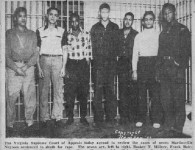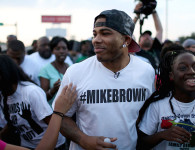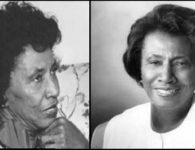Photo credits: Amantha May for The Marcus Harris Foundation
Another area where racial profiling exists is in education. In the article “How Profiling in Schools Feeds the School-to-Prison Pipeline” Caitlin Curly States:
“Over 70 percent of students involved in school-related arrests are Hispanic or Black, according to the findings of a 2010 EdWeek report. And a 2010 survey found that Black students are three-and-a-half times more likely to be suspended or expelled than their white peers (Curly, 2016, n.p.).”
Statistics show that racial profiling in education with Latinos and African Americans is increasing. They represent over 70 percent of students who are involved in school-related arrests. This case is another example of racial profiling. Additionally, a 2010 survey discovered that “Black students are three-and-a-half times more likely to be suspended or expelled than their white peers (Curly, 2016, n.p.).”
Racial profiling is not only affecting older students in the education field. It is also affecting children in preschool as well.
According to the article “Racial Profiling in Preschool,” the Editorial Board of the New York Times states:
“A computer program that tracked the eyes of the teacher as they watched the video showed that both black and white teachers watched the black children, especially the boys, longer when looking for signs of trouble. And when the researchers asked teachers which child had commanded the most attention, 42 percent of them chose the black boy, 34 percent the white boy, 13 percent the white girl, and 10 percent the black girl (The Editorial Board, 2016, n.p.).”
This example proves that racial profiling is common amongst preschool students. Forty-two percent of preschool teachers were watching the black boy in the video; whereas, 34 percent of the preschool teachers were watching the white boy when looking for signs of trouble. This exposed that the teachers watching preschool students were stereotyping them as trouble makers – even at four years old.
When it comes to the public education field, racial profiling plays a huge role in projecting injustice onto minority students attending public schools. A brief issued by the Children’s Defense Fund of Ohio titled “Zero Tolerance and Exclusionary School Discipline Policies” has an overview of statistics – pertaining to African American students in Ohio public schools and how it has an impact on them.
The brief’s report on this issue states: “Black students make up 16.5% of all children enrolled in Ohio public schools. They account, however, for 36.6% of all out-of-school suspensions. White students on the other hand make up 74% of Ohio’s public school enrollment but account for only 29.4% of all out-of-school suspensions (The CDF, 2018).”
The rate of racial profiling against African American students is high compared to white students. Statistics show that black students make up 16.5% of all students enrolled in Ohio public schools. However, they are held accountable for out-of-school suspensions at a rate of 36.6%.
White students, however, make up 74% of Ohio’s public-school enrollment. Yet they are only held accountable for out-of-school suspensions at a rate of 29.4%. Disobedient and disruptive behavior plays a massive role in racial profiling against black students attending public schools. They have a high rate of suspension and a low rate of enrollment.
Racial profiling negatively impacts minority students who are trying to succeed in academics. They are unjustly treated differently based on their race and ethnicity. An article from the Atlantic titled “How the Stress of Racism Affects Learning” (by Melinda D. Anderson) discusses students going through challenges as they are facing racism.
In this article Melinda D. Anderson states,
“Among this population of students, perceived discrimination from teachers was ‘related to lower grades, less academic motivation and less persistence when encountering an academic challenge.’ The study also found that the anxiety surrounding the stereotype of academic inferiority undetermined students performing academic tasks. Over time, Adam said, children, develop strategies to reduce racial stressors, but these, too, have consequences for academic success. Students might devalue the importance of doing well on tests or decide that doing well in school isn’t a part of their identity- ‘If you don’t care, then you’re not going to feel as stressed in those academic circumstances,’ she said, ‘but obviously that [affects] your performance (Anderson, 2016, n.p.).”
Racial profiling makes students have low self-esteem when it comes to excelling in classes. It disrupts the ability to gain the motive to achieve in academics. It can result in having less persistency when facing academic challenges – and even cause minority students to lose the value to do well on tests.
Furthermore, students may also believe that doing well in school is not part of who they are.
References
Curly, C. (2016). How Profiling in Schools Feeds the School-to-Prison-Pipeline. [FKD]. http://www.genfkd.org/profiling-schools-feeds-school-prison-pipeline
The Editorial Board. (2017). Racial Profiling in Preschool. The New York Times. https://www.nytimes.com/2016/10/09/opinion/racial-profiling-in-preschool.html
Issue Brief. (2012). Zero Tolerance and Exclusionary School Discipline Policies. CDFOhio.org. http://www.cdfohio.org/assets/pdf-files/issue-brief-zero-tolerance.pdf
Anderson, M. D. (2016). How the Stress of Racism Affects Learning. The Atlantic. https://www.theatlantic.com/education/archive/2016/10/how-the-stress-of-racism-affects- learning/503567/




















No comments